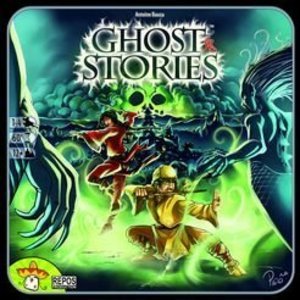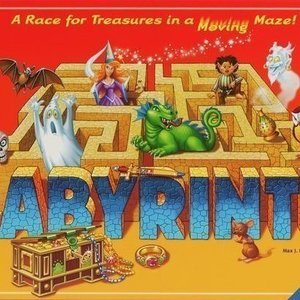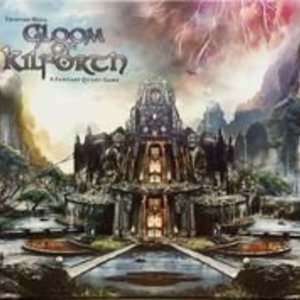
eBook: The Art of War
Book and Education
App
Enjoy reading The Art of War ebook with auto-scrolling, day and night viewing modes, bookmarks,...

HyperGrowth Entrepreneur Magazine: More Profit
Business and Magazines & Newspapers
App
"Get FREE FOR LIFE by Subscribing Now!" As in always absolutely free. Get battle hardened...
Matthew Krueger (10051 KP) rated Ghost Stories in Tabletop Games
Jul 28, 2020 (Updated Jul 30, 2020)
Gameplay:
Each Player represents a Taoist monk working together with the others to fight off waves of ghosts.
The players, using teamwork, will have to exorcise the ghosts that appear during the course of the game. At the beginning of his turn, a player brings a ghost into play and places it on a free spot, and more than one can come in at the same time. The ghosts all have abilities of their own – some affecting the Taoists and their powers, some causing the active player to roll the curse die for a random effect, and others haunting the villager tiles and blocking that tile's special action. On his turn, a Taoist can move on a tile in order to exorcise adjacent ghosts or to benefit from the villager living on the tile, providing it is not haunted. Each tile of the village allows the players to benefit from a different bonus. With the cemetery, for example, Taoists can bring a dead Taoist back to life, while the herbalist allows to recover spent Tao tokens, etc. It will also be possible to get traps or move ghosts or unhaunt other village tiles.
To exorcise a ghost, the Taoist rolls three Tao dice with different colors: red, blue, green, yellow, black, and white. If the result of the roll matches the color(s) of the ghost or incarnation of Wu-Feng, the exorcism succeeds. The white result is a wild color that can be used as any color. For example, to exorcise a green ghost with 3 resistance, you need to roll three green, three white, or a combination of both. If your die rolls fall short, you can also use Tao tokens that match the color in addition to your roll. You may choose to use these after your roll. Taoists gain these tokens by using certain village tiles or by exorcising certain ghosts. One of the Taoists has a power that allows him to receive such a token once per turn.
To win, the players must defeat the incarnation of Wu-Feng, a boss who arrives at the end of the game. There are also harder difficulty levels that add more incarnations of Wu-Feng, in which to win, you must defeat all of them.
There are many more ways to lose, however. The players lose if three of the village's tiles are haunted, if the draw pile is emptied while the incarnation of Wu-Feng is still in play, or if all the priests are dead.
It is hard game but the strategy to this game is excellent cause you have to think about your moves and what to do next. That and the clock is ticking down to one of the ten Wu-Feng Minions. Also if 3 village spaces get crushed than you lose. Also the luck of the dice and the cards. The strategy is ten fold. Its hard but a excellent game and a must play game. Buy it if you havent already cause its a must. If you want to learn more or see a runthrough of the game go to BoardGameGeek, Rahdo Runthroughs or Dice Tower Reviews.
Purple Phoenix Games (2266 KP) rated Labyrinth in Tabletop Games
Sep 29, 2020
Labyrinth is a game of tile placement and route building with a modular board in which you are trying to navigate the maze to collect various treasures. To setup the game, shuffle the maze tiles and place them randomly on the empty spaces of the board. There will be 1 tile left over. Shuffle the treasure cards and split them evenly between all players. Players may only look at the top card of their stack at a time. On your turn, you are trying to get your pawn to the tile showing the treasure from your card. You do this by shifting the board and creating new pathways through the maze. Take the extra tile, and add it to a row or column, effectively shifting the entire line in one direction. Once you have shifted the maze, move your pawn as far as possible along the open pathway. If you reach your treasure tile, flip over your card. You now look at the next card in your stack, and on your next turn will begin moving towards that tile. If you don’t reach your treasure tile, that is fine. Just try to set yourself up to reach it on your next turn! The game ends once a player has flipped over all of their treasure cards and returned their pawn to its starting position.
I loved Labyrinth as a kid, and I still love it as an adult. The gameplay is pretty engaging, and now that I’m older, I can appreciate the strategy required of the game way more. One of the most fun parts of the game is the act of shifting the tiles. It’s just fun to watch the rows shift, creating new pathways and trapping opponents in dead-end routes. Not just that, but the amount of strategy you need for success is crazy! You have to be thinking several turns in advance, trying to figure out how to shift the randomly set-up maze to your maximum benefit, while also trying to anticipate how your opponents might shift the maze as well. There really is no down-time in Labyrinth, and that keeps it exciting for such a simple game.
The one thing I do not necessarily like about Labyrinth is that you are only allowed to look at your top treasure card at a time. Sometimes you spend several turns getting to a treasure tile, just to look at your next card and realize that you passed through that tile several times on your way here. I guess it would probably make the game easier overall if you could see all of your cards at once and decide your path from there. Not that I necessarily want an easier game, it can just get frustrating sometimes when you have to be traveling back and forth across the board for every single card.
Labyrinth is definitely a game that I will keep in my collection forever. It was a childhood favorite of mine, and I still love to bring it out with my siblings for some good nostalgia coupled with brain-burning strategy. I can’t wait to have children of my own so that I can play this game with them as well. Just because it’s an old game, doesn’t mean that it’s a bad game! Give it a try if you haven’t, because I think you’ll love it. Purple Phoenix Games gives Labyrinth a twisting 8 / 12.
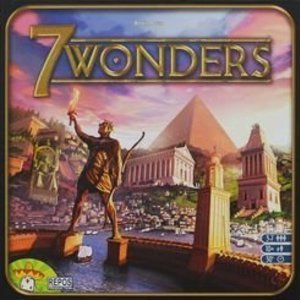
7 Wonders
Tabletop Game Watch
You are the leader of one of the 7 great cities of the Ancient World. Gather resources, develop...
BoardGames
Paul Kellett (118 KP) rated Gloom of Kilforth: A Fantasy Quest Game in Tabletop Games
May 1, 2019
You start by choosing a character, class and a saga to tell. Your character and class give you your starting stats (combat, knowledge, sneak and influence) while the sagas are 4 chapters long and each chapter requires 2 (or 3 if only playing 1-2 players) keywords to complete. Completing a chapter levels up your character giving you more health and a new skill.
Keywords are found on the cards you encounter as you search the map and are colour coded to give you a hint to where they are most likely to be found.
The map is a 5x5 grid of cards with Sprawl City in the centre and a mix of Forests, Mountains, Plains and Badlands arranged randomly around it.
Every time you enter an empty location, you draw a card from the relevant terrain deck and interact with it.
Encounters are won by rolling a number of d6 dice equal to your skill in the stat list d on the encounter. Success is on a 5 or 6 so playing to your character's strengths is paramount.
Each player starts with 4 health and at the start of each round, you gain action points equal to your current health which makes strategy and stealth the key to early success.
It also means that the game starts slowly but starts to snowball as you complete the chapters of your saga and level up.
At the end of each round, you make camp and draw a night card which causes a location to fall into gloom and possibly trigger an event. A character ending the day on a gloom location will suffer 1 health point loss.
This is the game timer, so you have 25 days to complete your saga, gain more skills and equipment and confront the big bad.
Despite the random encounter draws and the size of each terrain deck (30+ cards each), every card has been carefully designed to fit into the game and let you narrate a unique story as you play.
If you want a unique narrative adventure game with a solid depth of strategy, look no further.

The Art of War by Sun Tzu
Podcast
The Art of War is a 6th Century BC Chinese treatise on war and military strategy known for its...
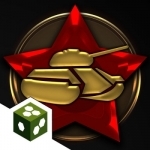
Russian Front
Games and Entertainment
App
Russian Front is our most ambitious strategy game yet, an operational-level game with a wider scope...
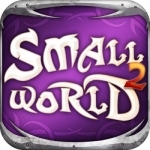
Small World 2
Entertainment and Games
App
This game is like risk, but Faster, Funnier, and more fun. "One of the most compelling games for...
BoardGames BoardGameApp GreatGames
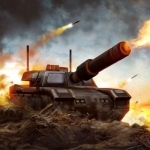
Empires & Allies
Games
App
Get ready to annihilate the enemy! Join your friends, form alliances, build your army and prepare...
